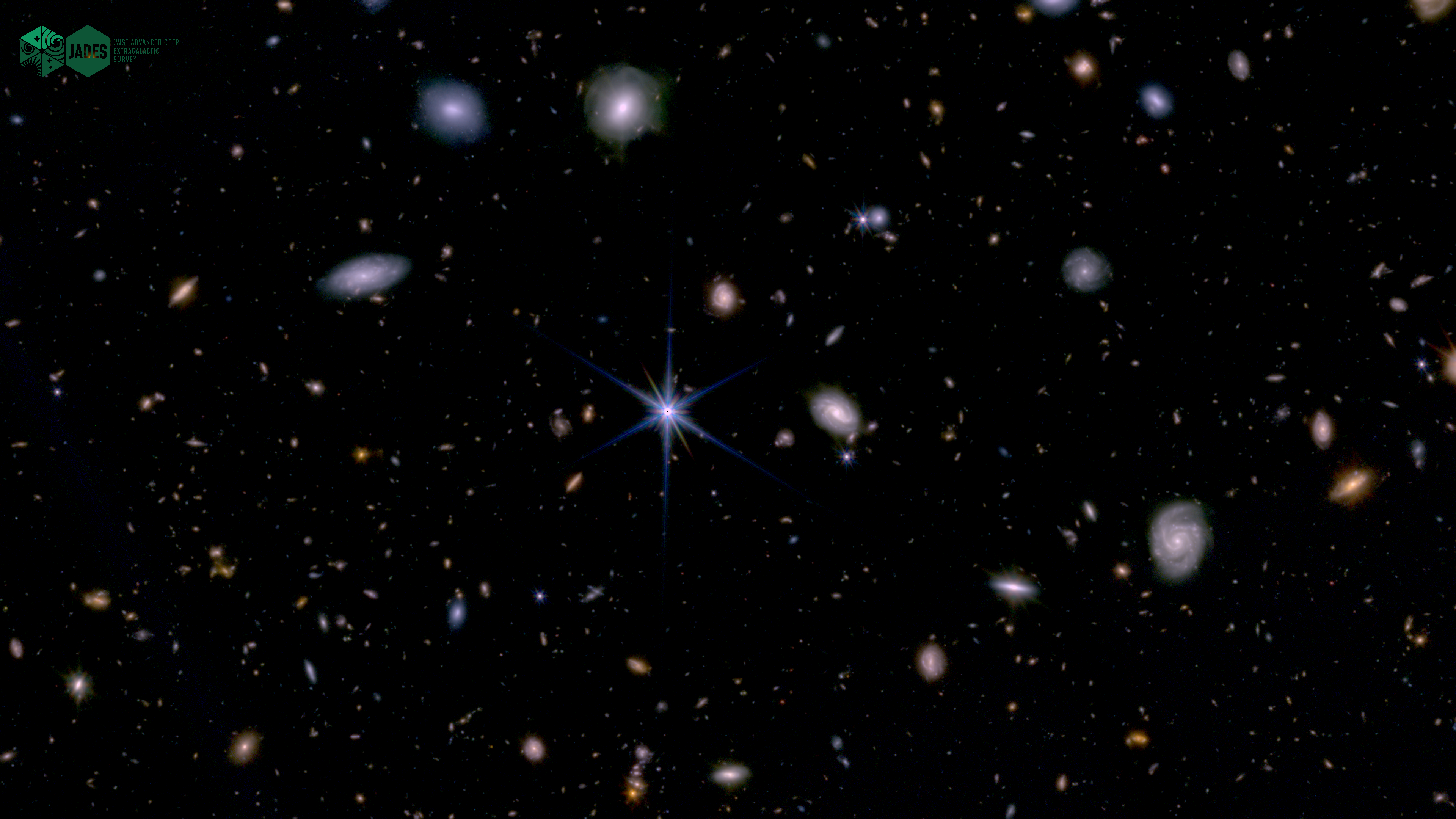James Webb Space Telescope Discovery
Clicking on each image will open the full resolution one. Try it!Clicking on "Raw images" image will yield all the relevant raw images.
Galaxy JADES-GS-z6 in the GOODS-S field
This image highlights the location of the galaxy JADES-GS-z6 in a portion of an area of the sky known as GOODS-South, which was observed as part of the JWST Advanced Deep Extragalactic Survey, or JADES.
This galaxy, along with others in this region, were part of a Webb study by an international team of astronomers, who observed the chemical signature of carbon-rich dust grains at redshift ~7. This is roughly equivalent to one billion years after the birth of the Universe. Similar observational signatures have been observed in the much more recent Universe, attributed to complex, carbon-based molecules known as polycyclic aromatic hydrocarbons (PAHs). It is not thought likely, however, that PAHs would have developed within the first billion years of cosmic time. Therefore, this observation suggests the exciting possibility that Webb may have observed a different species of carbon-based molecule: possibly minuscule graphite- or diamond-like grains produced by the earliest stars or supernovae. This observation suggests exciting avenues of investigation into both the production of cosmic dust and the earliest stellar populations in our Universe, and was made possible by Webb’s unprecedented sensitivity.
The team’s research indicates that this particular galaxy showed significant dust obscuration and has undergone substantial metal enrichment relative to galaxies with similar mass at the same redshift. The team also believes the galaxy's visible colour gradient may indicate a peculiar geometrical alignment of stars and dust.
In this image, blue, green, and red were assigned to Webb’s NIRCam (Near-Infrared Camera) data at 0.9, 1.15, and 1.5 microns; 2.0, 2.77, and 3.55 microns; and 3.56, 4.1, and 4.44 microns (F090W, F115W, and F150W; F200W, F277W, and F335M; and F356W, F410M, and F444W), respectively.
The galaxy is shown zoomed in on a region measuring roughly 1x1 arcseconds, which is a measure of angular distance on the sky. One arcsecond is equal to 1/3600 of one degree of arc (the full Moon has an angular diameter of about 0.5 degrees). The actual size of an object that covers one arcsecond on the sky depends on its distance from the telescope.
Credit: ESA/Webb, NASA, ESA, CSA, B. Robertson (UC Santa Cruz), B. Johnson (Center for Astrophysics, Harvard & Smithsonian), S. Tacchella (University of Cambridge), M. Rieke (Univ. of Arizona), D. Eisenstein (Center for Astrophysics, Harvard & Smithsonian), A. Pagan (STScI), J. Witstok (University of Cambridge)
 Galaxy JADES-GS-z6 in the GOODS-S field: JADES (NIRCam image)
Galaxy JADES-GS-z6 in the GOODS-S field: JADES (NIRCam image)
 Crop of the GOODS-S field: JADES (NIRCam image, clean)
Crop of the GOODS-S field: JADES (NIRCam image, clean)
 Crop of the GOODS-S field: JADES (NIRCam image, clean)
Crop of the GOODS-S field: JADES (NIRCam image, clean)
 More JWST-JADES images (unofficial)
More JWST-JADES images (unofficial)